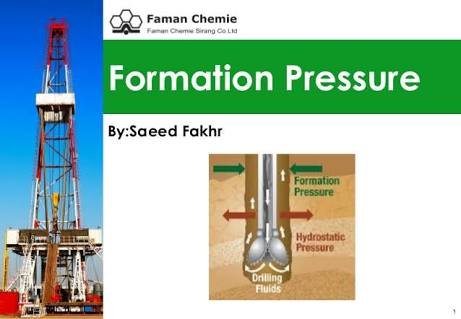Formation pressure in The oil and gas sector
INTRODUCTION
Formation pressure is one of the most important parameters in the oil and gas industry. Reservoir and production engineers, among others, have particular interest in this parameter, as it affects dynamic reservoir properties, drainage volumes, fluid phase behaviour and other factors. These parameters impact reservoir energy, reserves and ultimately the economics of a particular asset. Once the well is completed, there are limitations in determining formation pressure. Traditionally, pressure surveys require pressure gauges, packers, shutting-in the well, and deferring production, yet such measurements are at high risk of poor accuracy due to possible communication between layers at the reservoir level. TGT's Spectral Pressure (SPEC-FP*) is a service that measures the noise power of the fluid flow in active reservoir streaks at different choke sizes and flowing pressures.
WHAT IS FORMATION PRESSURE ?
Formation pressure is the pressure of fluid contained in pore space of rock..
Formation pressure is an important information for well planning and operation because it impacts on several things as well control, casing design, drilling fluid program, pore pressure prediction, etc. We will discuss about formation pressure in a basic term for drilling personnel.
During an era of sedimentation and erosion, little grains of sediment are constantly building above each other, usually in an environment of full irrigation. As the sediment thickness of the base layer increases, the sediment grains are packed strongly near to each other, and some water is excluded from the small pore spaces. Though, if the pore spaces through the deposit sediments are connected to the top pressure surface, the fluid at any depth in the sediment will be same as that which would be found in a simple column of fluid
The pressure of fluid in sediment pores would only be reliant on the fluid density in pore space and depth of the pressure measurement (equal to the elevation of the column of liquid). It will also be independent of size of the pore or throat geometry. The pressure of the fluid in the pore space (the pore pressure) can be measured and plotted against depth.
There are 3 categories of the formation pressure which are normal pressure, abnormal pressure and subnormal pressure.
Normal Pressure: Normal pressure is the hydrostatic of water column from the surface to the subsurface formation. The concentration of salt in water affects the normal pressure. Higher salt concentration in water, higher specific gravity of water will be. Therefore, the normal pressure can vary from slightly salt 0.433 psi/ft (8.33 PPG) to highly concentrated salt 0.478 psi/ft (9.2 PPG) based on salt concentration in water.
The datum which is generally used during drilling operations is the drillfloor elevation but a more general datum level, used almost universally, is Mean Sea Level, MSL. When the pore throats through the sediment are interconnecting, the pressure of the fluid at any depth in the sediment will be same as that which would be found in a simple column of fluid and therefore the pore pressure gradient is a straight line. The gradient of the line is a representation of the density of the fluid. Hence the density of the fluid in the pore space is often expressed in units of psi/ftAbnormal Pressure: The abnormal pressure is the pressure greater than the pressure column of water. Generally, the abnormal pressure zones are good reservoir which oil companies are looking for. This kind of pressure can create well control problem. It can also be said to be Pore pressures which are found to lie above or below the “normal” pore pressure gradient line are called abnormal pore pressures. These formation pressures may be either Subnormal (i.e. less than 0.465 psi/ft) or Overpressured (i.e. greater than 0.465 psi/ft). The mechanisms which generate these abnormal pore pressures can be quite complex and vary from region to region. However, the most common mechanism for generating overpressures is called Undercompaction and can be best described by the undercompaction model
Subnormal Pressure: The subnormal pressure is the pressure that is less than normal pressure and it possibly causes lost circulation problems.
Hi! I am a robot. I just upvoted you! I found similar content that readers might be interested in:
https://tgtoil.com/services/spectral-reservoir-platform/formation-pressure/
Nice piece
Thank you man
Lovely work, very nice